Journal of Water Resource and Protection
Vol. 5 No. 3A (2013) , Article ID: 29220 , 7 pages DOI:10.4236/jwarp.2013.53A034
Coastal Reservoirs Strategy for Water Resource Development—A Review of Future Trend
1School of Civil, Mining & Environmental Engineering, University of Wollongong, Wollongong, Australia
2College of Hydraulic Engineering, Changsha University of Science and Technology, Changsha, China
Email: jl997@uowmail.edu.au
Received December 18, 2012; revised January 22, 2013; accepted January 31, 2013
Keywords: Water Crisis; Water Quality; Coastal Reservoir; Future Trend
ABSTRACT
Water use and access become a more and more important determinant of environmental equity and human development according to the view held by the UN [1]. Water scarcity is one of the major crises which has overarching implications for other world problems especially poverty, hunger, ecosystem degradation, desertification, climate change, threatening world peace and security [2]. In the decades to come, freshwater consumed by human will get to a tipping point. Many projects and concepts have been proposed and implemented for several years to improve the effectiveness of using water. These research activities can be grouped as: desalination plants; water detention (like rainwater tanks for collection and reuse); wastewater reuse; dams and reservoirs. This paper summarized the characters of these water solutions. But these methods can’t provide enough fresh water due to limitations imposed by these methods as well as following industry and population’s development. To overcome these shortcomings, coastal reservoir strategy is proposed in the paper. This new strategy is technically feasible, environmentally sustainable and cost effective by demonstration and comparison.
1. Introduction
The shortage of fresh water reserves is a world-wide problem nowadays. As about 66℅ of the world population would be confronted with water-shortage by 2025 [3]; the water from aquifers, which provide water for one-third of the world’s population, are being used out before nature can complement them [4]. Water scarcity is already a focus of attention all over the world [5]. For example, the Southwest and Midwest areas of the USA and Australia are vulnerable to water scarcity [6]. Especially in Australia, water allocations for irrigation have caused a conspicuous decline in rainfall and runoff in the past decades [7].
Many ideas have been proposed to increase the availability of fresh water including: desalination plants, water detention (collection and reuse), dams. However, the people are still facing water crisis. In the 6th World Water Forum, “The time for solutions” is put forward. This study summarized the current situation of water solutions and proposed the new waters strategy-coastal reservoir. The effectiveness of coastal reservoir was compared to the existing sustainable water methods to demonstrate the advantages and disadvantages of each method. Its application was also discussed. The new type of water reservoirs utilizes rainfall (flood) scientifically and may be a future trend.
2. Main Water Solutions
There are mainly several kinds of water supply options in the world, for example, groundwater, inland reservoir, seawater desalination, water diversion, wastewater reuse, stormwater harvesting.
Groundwater is used as one of water sources, especially as drinking water source for thousands of years. Yet groundwater resources in the world are almost fully developed. In some areas, they are already considered overdeveloped. The groundwater source that could potentially be developed in the world is so small that to be exploited isn’t economically viable and will affect environment.
The water supply source of inland reservoir relies on rainfall. Besides, the location of inland reservoir is difficult to be sited, as the construction of inland reservoir requires the correct combination of topography, hydrology and geology. Building on-land Reservoir may migrate people or change the local ecological environment, which is against by local people. For example, in Australia, in the recent two centuries, there are almost no new dam sites built. Soil erosion also keeps reducing the storage capacity of the inland reservoirs by more than 1% annually. In Australia, inland reservoirs were subjected to very high siltation rates which are comparable to overseas [8]. In the future, soil erosion and reservoir sedimentation rates would be accelerated due to the severity of storms and rains as a result of global warming [1]. This means that almost all existing inland reservoirs may lose much of its capacity in about 100 years. Therefore, the other water source options should be considered.
The first desalination plant by the multi-stage flash (MSF) evaporation process installed in 1964 in Linarite (Canary Islands), over 700 desalination plants exist nowadays [9]. Desalination technologies account for a worldwide production capacity of 24.5 million m3/day [10], the cost decreased to $0.50 - 0.80/m3 desalinated water and even to $0.20 - 0.35/m3 for treatment of brackish water [11]. However, they have potential negative impacts [12]. These are mainly attributed to the concentrate and chemical discharges, which may impair coastal water quality and affect marine life, and air pollutant emissions are attributed to the energy demand of the processes. A key concern of desalination plants is the concentrate and chemical discharges to the marine environment, which may have adverse effects on water and sediment quality, impair marine life and the functioning and intactness of coastal ecosystems [12]. WHO (World Health Organization) provided a general overview on the composition and effects of the waste discharges in their guidance document. Lattemann [12] and MEDRC [13] discussed details of the negative impacts. Reverse osmosis (RO), a commonly used desalination technology, is significantly more expensive than the standard treatment of dam water for potable use. Furthermore, desalination technologies have the risk of oil pollution, as oil films can cause serious damage inside a desalination plant and oil contaminants may impact the product water quality. Desalination also causes noise pollution. Most of the noise is produced by the high-pressure pumps and the turbines [14]. Desalination of seawater does not rely on rainfall (it is a climate resilient water source). Desalination plants are located on the coast, and as mentioned earlier this is where the majority of the water demand is expected to be located. But the treatment process would have high energy requirements as well as high operating and maintenance costs because of the high concentrations of contaminants that would have to be removed. The concentrate stream produced by the desalination process can have detrimental environmental impacts. This could be a significant problem if the desalination plants were located on the coast, because the discharge would be released into a place, which is maybe a very sensitive marine environment. Therefore, other water supply options need to be developed.
Diversion of water from a remote source does not depend on local rainfall or local water quality. But this water source would have very high construction costs. For instance, the government of Queensland in Australia has considered diverting water supplies from North Eastern NSW, but this was found to be not economically viable. There were also numerous social, environmental and interstate issues that were considered to be insurmountable. Water could potentially be diverted from Northern Queensland. However, this would involve very high construction costs and should only be considered if no alternative water sources are available locally. Another example, The South-North Water Transfer Project (SNWTP), which is a multi-decade infrastructure project of the People’s Republic of China to utilize water resources available, diverts 44.8 billion cubic meters/year of water from South to North. The cost of the project is over 500 billion, which causes many experts to question if the project is optimal [15,16].
Reuse of wastewater does not depend directly on rainfall. But the level of contaminants is higher than other water supply options except seawater. Therefore, the operating cost of the treatment process would be higher. It is a common practice to discharge untreated sewage directly into bodies of water or put onto agricultural land, causing significant health and economic risks [17]. There could also be public perception problems with the reuse of wastewater.
Stormwater harvesting is used in house yards, streets and parks in some countries like Australia, but there are several shortages. Goonrey analysed the technical feasibility of using stormwater as an alternative supply source in an existing urban area [18], the shortcomings are: firstly, its storage capacity is very small due to the structural constraints; then its water quality may be not very good as the water comes from densely populated areas, and its cost is also very high as precious land is used to store the storm water.
Now the current water solutions can’t satisfy people’s increasing need for water. Commonly for one area, there is too much rain in the wet season which causes flood and excess rainwater discharge into the sea, but in dry season, there is not much rain, which causes water shortage. According to statistics, there is only about 1/6 of the runoff used by human in the world and about half of all available fresh water on the earth runs into the sea from coastlines where the fresh water mixes with saltwater. Therefore, the issue is not lack of water, but it is lack of how to make use of the water. Coastal reservoir [19] was proposed to solve this problem.
3. Coastal Reservoir
Coastal reservoir is a freshwater reservoir in the seawater near a river mouth to capture the sustainable river flow [20]. It provides water for people by storing water from the runoff which will flow into the sea, or flood. The location of a coastal reservoir can be inner, outer or beside a river mouth. The dam of a coastal reservoir can be concrete, earth or soft dam. The water in the coastal reservoir can be used for drinking, irrigation or industrial usage.
Compared with water from seawater desalination processes, catchment runoff is a natural resource, which is cost-saving and water quality is similar to storm water or like the dam water in inland reservoirs. Different from the inland dams, coastal reservoir harvests the catchment runoff into the sea, its water sources from a river and the reservoir has the potential to catch all runoff from a catchment. Coastal reservoirs are usually below the sea level while inland reservoirs are above the sea level. Existing freshwater lakes or lagoons on the shore can be regarded as special or natural coastal reservoirs.
A coastal reservoir can be constructed using both a primary and secondary barrier. The primary barrier can be high enough to be above the tidal and wave height of the ocean/river/bay of unwanted water. It also can be strong enough to withstand the forces imparted on the wall by wave and tidal actions. The secondary barrier is a floating barrier that has a skirt suspended from it. The skirt can extend to the floor of the reservoir and can be weighted with ballast to fix it. It can also be moved with an anchor and chain system. The purpose of this is the buffer zone can be varied in volume to allow for the volume of contaminated fresh water and keep it separated from the uncontaminated fresh water (Figure 1).
The reservoir is filled by either allowing fresh water inside through a gate system during times of freshwater flows in the river, for example flood times; or by way of a conventional catchment system where the coastal reservoir is positioned correctly so that it is fed by catchment inflows.
Coastal reservoir is designed in such a way that it can be adapted to different locations without blocking off entire rivers or lakes as shown in Figure 2. Thus not disturbing environmental flows or leaving the waterway
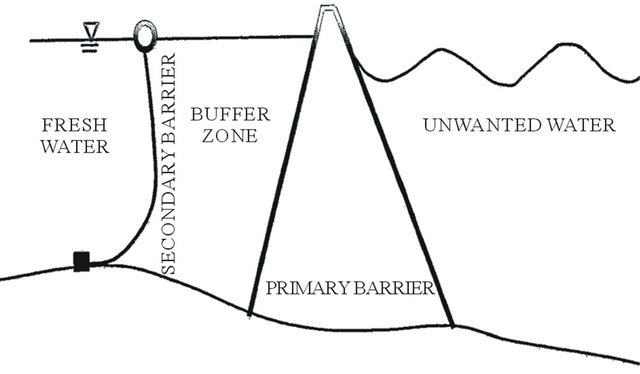
Figure 1. Coastal reservoir construction [20].
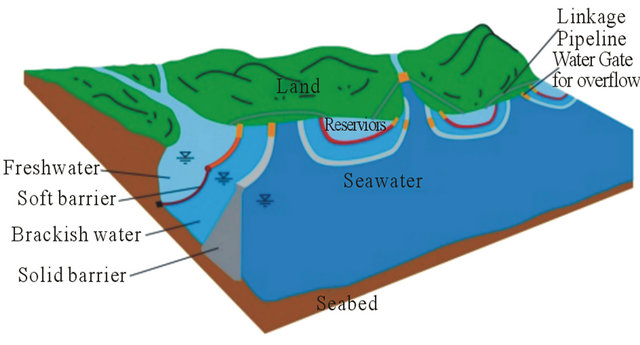
Figure 2. Multiple coastal reservoir design.
redundant in terms of commercial or recreational activities.
3.1. Existing Coastal Reservoirs
The first coastal reservoir was built in Zuider Zee, Netherlands in 1932, named Ijsselmeer with water area of 1240 km2. At that time, people mainly enclose sea area to set up land with getting water as a fringe benefit. During the late 20th century and early 21st century, coastal reservoirs are predominantly built to get potable water by catching flood or rainfall and diluting salt water.
This type of Coastal Reservoir is being used in Singapore, South Korea, Hong Kong and China. Currently, there exist many coastal reservoirs in the world are listed in Table 1.
From this table, it can be seen that coastal reservoirs allow a huge amount of water to be stored by collecting water over a large Catchment area. The Qingcaosha which is currently the longest dam in the world supplies over 7 GL of potable water a day to the 11 million residents in Shanghai, which is also half of Australia population.
The Plover Cove Reservoir, located in Plover Cove Country Park, is the first “reservoir in the sea” over the world which is specially designed for drinking purpose. It is also the second largest reservoir in Hong Kong (see Figure 3). The imposing dam is 28 meters, which is Hong Kong’s longest dam. Water storage capacity is 230,000,000 m3, which equals to 230 billion bottles of 1 L beverage.
Singapore has high annual rainfall but with very little readily available water, more than half of the annual rainfall runs off into the sea [21]. Due to its rapid economic and population growth in the past decades, the demand for potable water in Singapore increases steadily, the former way of water supply can’t satisfy the need of people’s living and production. To augment water supply, Singapore has built the Marina Barrage to develop further its rainfall (see Figure 4). It provides approximately 10% of the population’s potable water supply which accounts for 462,000 people at the time of completion 2008
Table 1. Existing coastal reservoirs in the world.


Figure 3. Plover cove reservoir.
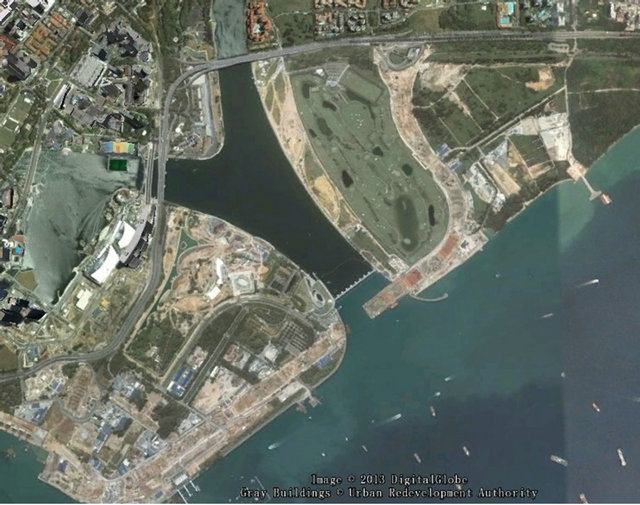
Figure 4. Location of the marina barrage.
[22]. If the average daily taken, water consumption per person in Singapore is 153 litres [21]. Marina Barrage provides 71 ML of potable water per day which is 25.8 GL a year, which alleviates water problems in Singapore.
The Marina Barrage is a dam built across the 350-metre wide Marina Channel to keep out seawater. Marina Reservoir, together with Punggol and Seragoon reservoirs, increased Singapore’s water catchment area from half to two-thirds of Singapore’s land area in 2011. It achieves three aims: to act as a tidal barrier for flood control; to create a new reservoir to augment the water supply; to maintain a new body of freshwater at constant level in the heart of the city as a major lifestyle attraction. The project has been carefully designed to blend in well with the environment, which won many Awards nationally and internationally. Figure 5 shows the flood-controlling working principal of the Marina Barrage.
3.2. The Functions of Coastal Reservoir
For three main functions-irrigation, industrial and domestic water using, most of coastal reservoirs are used for irrigation and domestic water using, like Sihwa, Marina Barrage, Qingcaosha, Yuhuan, and Plover Cove. According to the difference of water quality, two coastal reservoirs in the same area are divided for different functions. For example, Chenhang Reservoir, which is located in Yangtze River Estuary of China, mainly provides drinking water for north area of Shanghai. Baogang Reservoir, which is besides Chenhang Reservoir, plays an important role in providing industrial water to keep Baoshan Steel going on (see Figure 6).
3.3. Environmental and Social Impact of Coastal Reservoir
Coastal reservoir at a river mouth can capture every single drop of runoff, and also has potential to collect all contaminants yielded from the catchment. For water quality, coastal reservoirs catch the stormwater runoff which is closer to drinking water in quality than the
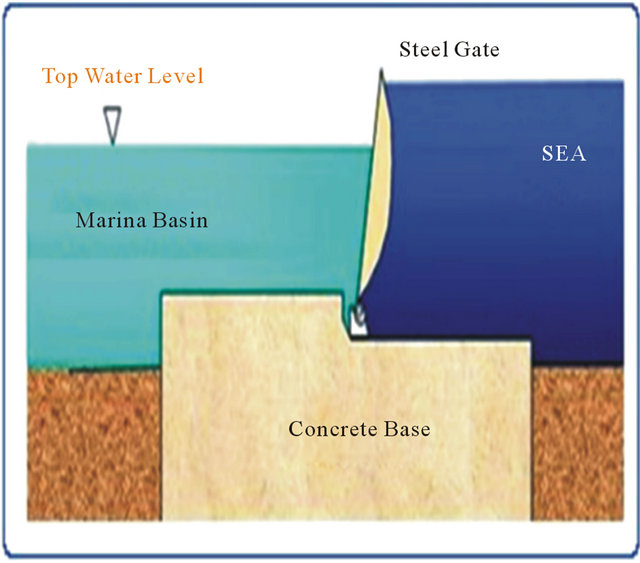
Figure 5. Working principal of the marina barrage.
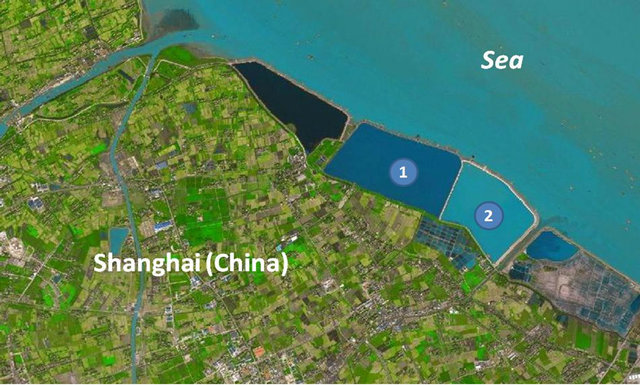
Figure 6. Baogang and Chenhang reservoir (① is Baogang Reservoir and ② is Chenhang Reservoir).
treated salt water produced by desalination.
For environmental impact, as there is nearly no land requirements for building coastal reservoirs and water quality can be guaranteed, the damage to the local ecosystems and marine wildlife can be minimized greatly. The proposed method of harvesting will avoid any severe environmental impacts such as depriving local rivers of water. As the reservoirs construction at sea, no land is needed for construction purposes making them better for the environment than typical inland mountainous reservoirs. As only high quality water (free of contaminates) is allowed to enter the reservoir, it will help to minimize the impact of the coastal reservoir on the local ecosystem and marine wildlife.
Due to the reservoirs’ ability to capture every single drop of runoff, it is functional as long as rain continues to fall. Thus it is highly sustainable; its life span could last for many decades and does not pose any major risks to the population. Coastal reservoirs will not lead to flooding, as the water collected is in the ocean. When there is too much stormwater which may occur during long wet periods, the excess water will be drained into the ocean this preventing any form of flooding. For place selection, coastal reservoirs are able to fit into any location at the mouth of a river (river estuary) entering into ocean. This is very convenient for coastal cities which have huge population and less space.
3.4. Comparison between Desalination, Storm Water Harvesting, Waste Water Reuse and Coastal Reservoirs
For Desalination, its advantages are it can be used whenever a water shortage is present due to the constant availability of salt water. A constant maximum output can always be achieved if necessary. It has high output that covers a large portion of the population. But the disadvantages are it has very high capital costs and very high ongoing cost. It environmental damage can’t be neglected. Besides, a percentage of the plant’s ongoing costs still exist even if the plant is not operating, meaning that during extended periods the plant produces nothing but still incurs ongoing costs for maintenance and electricity.
For Storm Water harvesting, its advantages are its water source is from storm water, which of cost is lower when compared to other methods. And it has low ongoing costs. There is little or no energy needed to produce water. It has long design life that will last as long as a catchment area exists. But the disadvantages are the following. The first is it has high negative environmental impact due to a large amount of land that needed to be converted. The second is it relies on large rainfall events, meaning that during times of drought storm water harvesting will provide very little to know usable water. The third is limited maximum capacity. Now storm water harvesting is mainly used in household or parks, which is difficult to satisfy massive water demand.
For waste water reuse, its advantages are: the first is it provides environmental benefits instead of a negative environmental impact. The second is it can be used all year round due to the constant volume of wastewater produced by the population. The third is its low ongoing cost. But the disadvantages are also obvious. The first is water cannot be used for human consumption. The Second is it has small maximum output. The Third is it needs very high capital cost per GL produced. The fourth is it requires high energy requirements to produce water.
For coastal reservoir, it can easier expand the amount of water it could store and can operate 365 days a year or as needed and will incur. There are no costs when not in use and nearly no or low negative environmental impact. For the cost comparisons, see Table 2.
Table 2 shows the comparison of construction cost and cost per kilolitre of water between coastal reservoir and other water solutions.
Table 2. Cost comparison between coastal reservoirs and other water solutions.

The data of the table is based on the conditions in Australia. The construction cost per kilolitre of water and cost per kilolitre of water of coastal reservoirs are calculated based on the existing coastal reservoirs in the world [23-27]. For inland reservoir, the data is based on statistical data of the United Nations. For desalination, the construction cost per kilolitre of water and cost per kilolitre is from comprehensive evaluation of Israel [28], Singapore [29], and Australia [30], America [31], India [32] and so on, which in the world mainly have robust desalination technology. For water recycling, the data is on account of Remco Engineering on Water Systems and Controls in USA [33] and National Snapshot of Current and Planned Water Recycling and Reuse Rates in Australia [34]. The data resource about mass water transport is in view of water transport project in Australia [35], the USA [36,37], China [38] and Africa, which of the countries in the world are famous for water transporting. From the above, coastal reservoirs are low-cost compared with other water solutions.
4. Conclusions
Together with the supply of energy and the environmental protection, freshwater is one of the three keys elements for the sustainable development of every society [39]. In the last years many strategies have been assigned and used to release water crisis. However, all of these have this or that shortages which is hard to overcome so that they can’t solve the problem.
The paper explored the application of coastal reservoirs and its coherent functions and compared coastal reservoir and other water use ways. Pipelines for pumping water upstream to holding dams or reservoirs can be installed at same time as downstream pipelines, which is much easier than inland reservoir. Furthermore, coastal reservoir can be located away from environmentally sensitive areas, which is benefit for protect environment. For a more rational use of water, coastal reservoir might be the future in planning a cheaper and more sustainable way. In the further study, more coastal reservoir applications will be more deeply discussed.
5. Acknowledgements
The research presented in this paper has been supported by the University of Wollongong, Australia. The works are also supported, in part, by the research projects “Sediment Transport Processes and Mechanism of Beach Profile Evolution under Global Climate Change” (51239001) and “Investigation on Formation Mechanism of Secondary Currents and Its Roles for Mass and Momentum Transfer” (51228901) funded by National Natural Science Foundation of China.
REFERENCES
- UNDP, “Sustainability and Equity: A Better Future for All,” Human Development Report, 2011.
- S. Khan and M. A. Hanjra, “Footprints of Water and Energy Inputs in Food Production-Global Perspectives,” Food Policy, Vol. 34, No. 2, 2009, pp. 130-140. doi:10.1016/j.foodpol.2008.09.001
- N. W. Arnell, “Climate Change and Global Water Resources: SRES Emissions and Socio-economic Scenarios,” Global Environmental Change, Vol. 14, No. 1, 2004, pp. 31-52. doi:10.1016/j.gloenvcha.2003.10.006
- T. Shah, O. P. Singh and A. Mukherji, “Some Aspects of South Asia’s Groundwater Irrigation Economy: Analyses from a Survey in India, Pakistan, Nepal Terai and Bangladesh,” Hydrogeology Journal, Vol. 14, No. 3, 2006, pp. 286-309. doi:10.1007/s10040-005-0004-1
- N. V. Fedoroff and D. S. Battisti, “Radically Rethinking Agriculture for the 21st Century,” Science, Vol. 327, No. 5967, 2010, pp. 833-834. doi:10.1126/science.1186834
- M. A. Hanjra and M. E. Qureshi, “Global Water Crisis and Future Food Security in an Era of Climate Change,” Food Policy, Vol. 35, No. 5, 2010, pp. 365-377. doi:10.1016/j.foodpol.2010.05.006
- CSIRO, “Water Availability in the Murray-Darling Basin, 2008,” 2012. http://www.csiro.au/files/files/pna0.pdf
- H. Chanson and D. P. James, “Railway Dams in Australia: Six Historical Structures,” Transactions Newcomen Society, Vol. 71, No. b, 1999, pp. 283-304.
- J. J. Sadhwani and J. M. Veza, “Case Studies on Environmental Impact of Seawater Desalination,” Desalination, Vol. 185, No. 1-3, 2005, pp. 1-8. doi:10.1016/j.desal.2005.02.072
- J. R. McCutcheon and R. L. McGinnis, “A Novel Ammonia—Carbon Dioxide Forward (Direct) Osmosis Desalination Process,” Desalination, Vol. 174, No. 1, 2005, pp. 1-11. doi:10.1016/j.desal.2004.11.002
- B. Van der Bruggen and C. Vandecasteele, “Distillation vs. Membrane Filtration: Overview of Process Evolutions in Seawater Desalination,” Desalination, Vol. 143, No. 3, 2002, pp. 207-218. doi:10.1016/S0011-9164(02)00259-X
- S. Lattemann and T. Höpner, “Environmental Impact and Impact Assessment of Seawater Desalination,” Desalination, Vol. 220, No. 1-3, 2008, pp. 1-15. doi:10.1016/j.desal.2007.03.009
- MEDRC, “Assessment of the Composition of Desalination Plant Disposal Brines. (Project NO. 98-AS-026),” Middle East Desalination Research Center (MEDRC), Oman, 2002.
- UNEP, “Seawater Desalination in Mediterranean Countries: Assessment of Environmental Impact and Proposed Guidelines for the Management of Brine,” 2001.
- J. Berkoff, “China: The South-North Water Transfer Project—Is It Justified?” Water Policy, Vol. 5, No. 1, 2003, pp. 1-28.
- Murray Darling Basin Commission, “Murray-Darling Basin Water Resources Fact Sheet,” Murray Darling Basin Authority, 2003.
- A. N. Bdour, M. R. Hamdi and Z. Tarawneh, “Perspectives on Sustainable Wastewater Treatment Technologies and Reuse Options in the Urban Areas of the Mediterranean Region,” Desalination, Vol. 237, No. 1-3, 2009, pp. 162-174. doi:10.1016/j.desal.2007.12.030
- C. M. Goonrey and P. Lechte, et al., “Examining the Technical Feasibility of Using Stormwater as an Alternative Supply Source within an Existing Urban Area—A Case Study,” Australian Journal of Water Resources, Vol. 11, No. 1, 2007, pp. 13-29.
- S.-Q. Yang and S. Ferguson, “Coastal Reserviors can Harness Stormwater,” Water Engineering Australia, Vol. 5, 2010, pp. 25-27.
- S.-Q. Yang, et al., “Coastal Reservoirs,” Singapore Patent No. 200504653-7, 2005.
- PUB Singapore, “Overview of Water Use in Singapore,” 2012. http://www.pub.gov.sg/conserve/Pages/default.aspx
- Singapore Statistics, “Time Series on Population,” 2012. http://www.singstat.gov.sg/stats/themes/people/hist/popn.html
- S. I. Lee, B. C. Kim and H. J. Oh, “Evaluation of Lake Modification Alternatives for Lake Sihwa, Korea,” Environmental Management, Vol. 29, No. 1, 2002, pp. 57-66. doi:10.1007/s00267-001-0040-0
- L. P. Onn, “Water Management Issues in Singapore,” Water in Mainland Southeast Asia Conference, Cambodia, 29 November-2 December 2005, p. 26.
- D. O. Cho, “The Evolution and Resolution of Conflicts on Saemangeum Reclamation Project,” Ocean & Coastal Management, Vol. 50, No. 11, 2007, pp. 930-944. doi:10.1016/j.ocecoaman.2007.02.005
- H. J. Lie and C. H. Cho, “Changes in Marine Environment by a Large Coastal Development of the Saemangeum Reclamation Project in Korea,” Ocean and Polar Research, Vol. 30, No. 4, 2008, pp. 475-484. doi:10.4217/OPR.2008.30.4.475
- X. Liu and X. Wang, “Study on Storage Capacity and Characteristic Water Level for Qingcaosha Reservoir,” Water Resources and Hydropower Engineering, July 2009.
- S. Shirli, “French-Run Water Plant Launched in Israel,” European Jewish Press, via ejpress.org, 2005.
- B. Veatch, “Designed Desalination Plant Wins Global Water Distinction,” Black & Veatch, Overland Park, 2006.
- Water Technology, “Perth Seawater Desalination Plant, Australia,” 2012. http://www.water-technology.net/projects/perth/
- K. Kathryn, “Water, Water, Everywhere...,” The Wall Street Journal, 2008. http://online.wsj.com/article/SB120053698876396483.html
- Chennai, “Low Temperature Thermal Desalination Plants Mooted the Hindu,” 2012. http://en.wikipedia.org/wiki/Low-temperature_thermal_desalination
- Remco, “Water Recycling Costs,” Remco Engineering on Water Systems and Controls, 2012. http://www.remco.com/waste.htm
- K. Whiteoak and N. Wiedemann, “National Snapshot of Current and Planned Water Recycling and Reuse Rates,” Marsden Jacob Associates, 2012. http://www.environment.gov.au/water/publications/urban/national-recycling-snapshot.html
- HWA, “Piping Water from the Ord to Perth,” Transporting Water, 2003, pp. 94-105.
- A. Oksche and R. Schülein, “Vasopressin V2 Receptor Mutants That Cause X-Linked Nephrogenic Diabetes Insipidus: Analysis of Expression, Processing, and Function,” Molecular Pharmacology, Vol. 50, No. 4, 1996, pp. 820-828.
- C. Lavack, “Hydrological Changes in the Sierra Nevadas due to Loss in Glacierized Area,” Northeastern Section (45th Annual) and Southeastern Section (59th Annual) Joint Meeting, 13-16 March 2010.
- D. Graham-Rowe, “Hydroelectric Power’s Dirty Secret Revealed,” New Scientist, Vol. 4, No. 2488, 2005, p. 12.
- F. Macedonio and E. Drioli, “Efficient Technologies for Worldwide Clean Water Supply,” Chemical Engineering and Processing: Process Intensification, Vol. 51, 2012, pp. 2-17. doi:10.1016/j.cep.2011.09.011

